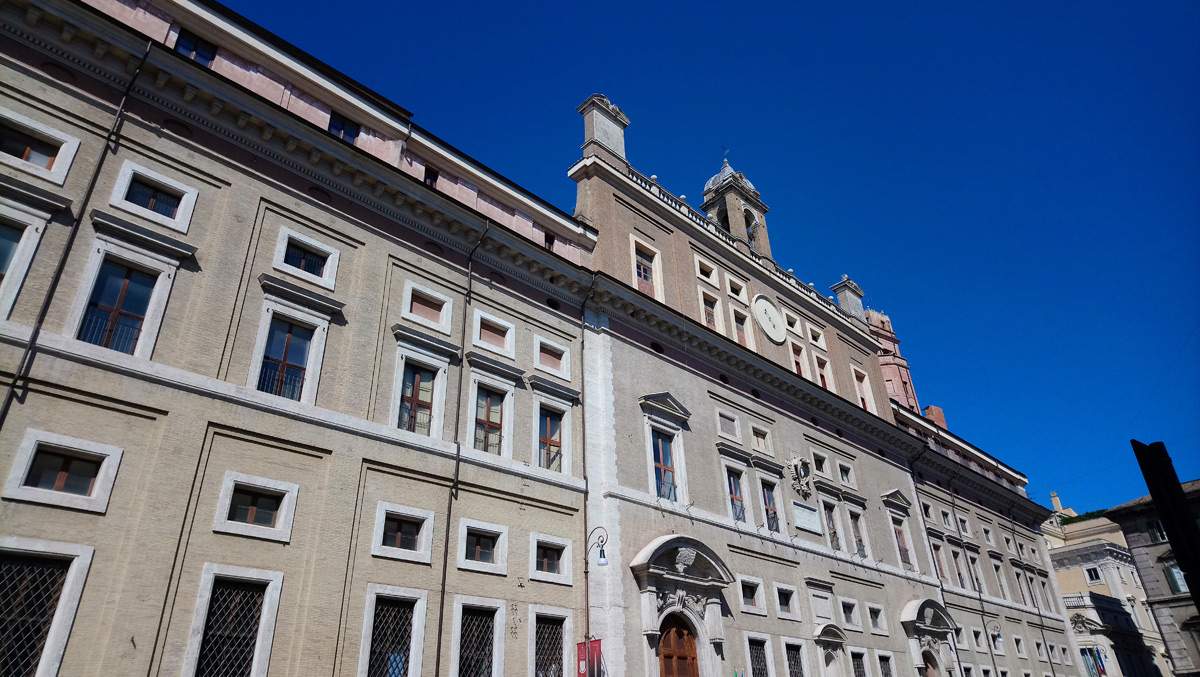The Bonisoli reform is official: the text of Prime Minister’s Decree No. 76 of June 19, 2019 (“Regulations on the organization of the Ministry of Cultural Heritage and Activities, the offices of direct collaboration of the Minister and the Independent Performance Evaluation Body”) was published on August 7 in the Official Gazette, and will come into force as of August 22. Almost all of the main changes contained in the reform draft have been confirmed. In particular, the powers of the secretary general are increased, who is given the “coordination of policies on loans abroad of cultural assets, in implementation of the Minister’s directives,” the “coordination on tourism policies with the competent Ministry of Agricultural Food, Forestry and Tourism Policies,” and the “coordination of policies on institutional communication and information, including through the Ministry’s website and in connection with the Press Office.” Removed the provision in the draft that guaranteed the secretary-general the possibility of avocating to himself the direction of a museum or in general of a peripheral executive office whose director is vacant (but the secretary-general will still be able to propose a replacement), and compared to the draft, the two general-level executive offices that are placed alongside him are also confirmed: aunit for planning, innovation and digitization of processes, “which carries out tasks in the area of strategic planning, innovation and digitization of processes, and in particular,” and a unit for cultural heritage security and emergency management, which “ ensures the coordination and implementation of all initiatives in the area of cultural heritage security and coordination of interventions resulting from national and international emergencies, also in collaboration with other relevant administrations.”
The amalgamation of the Directorate General for Archaeology with the Directorate General for Fine Arts and Landscape has been confirmed (the director general will have jurisdiction over measures of verification or declaration of cultural interest, adopt indirect protection prescriptions and declarations of significant public interest in the landscape), and the new Directorate General for “Contracts and Concessions” has also been confirmed, which will centralize contracts and concessions for both the headquarters and peripheral offices of the ministry (museums, archives, superintendencies, etc.) and will thus act as a contracting station: for the headquarters without limits of value and object, while for the peripheral offices the limits will be defined by ministerial decree.
As for the contemporary, confirmed the transformation of the Directorate General “Contemporary Art and Architecture and Urban Peripheries” into "Contemporary Creativity and Urban Regeneration," which will also have competencies on fashion and design: in particular, the directorate “promotes and supports Italian research, talents and excellence in the field of contemporary Italian art and architecture, design and fashion,” and “promotes knowledge of contemporary Italian art and architecture culture, design and fashion abroad, without prejudice to and in agreement with the Ministry of Foreign Affairs and International Cooperation.”
As for autonomous museums, the rejection of the Galleria dell’Accademia in Florence, the National Etruscan Museum of Villa Giulia and the Appia Antica Archaeological Park is confirmed: they will lose their autonomy. The reform also stipulates that “any other bodies established as autonomous” may be “identified,” and there may be mergers (“additional institutes or museums referred to in paragraph 3,” i.e., autonomous museums, “may be assigned to the institutes or places of culture”).
To the superintendencies, which will continue to carry out “the functions of protection and cataloguing within the area of competence, on the basis of the indications and programs defined by the General Directorate of Archaeology, Fine Arts and Landscape,” are also extended competences related to valorization (the superintendency, the text reads, “administers, controls and, on the basis of the policy activity of the General Directorate of Museums, enhances the assets handed over to it, and also carries out the relevant conservation work on them”), and other enhancement functions will be the responsibility of the new "territorial directorates of museum networks, " which replace the regional museum poles, abolished by the Bonisoli reform (the territorial directorates, the text reads, “ensure on the territory the fruition and enhancement of museums and other institutes and places of culture”). The “territorial directorates of museum networks” will later be identified by a ministerial decree. Enhancement responsibilities are also entrusted to “museums and other institutes and places of culture,” which “carry out functions of enhancement of the assets entrusted to them, ensuring their public enjoyment, as well as of protection with reference to the movable assets in their care,” but enhancement activities will have to be subject to the guiding activities of the General Directorate for Museums.
Confirmed again is the separation of export offices from the superintendencies: they will become offices of non-general executive level, peripheral articulations of the General Directorate for Archaeology, Fine Arts and Landscape: to decide on the export of goods, the text of the reform states, will be “a special Commission made up of three officials of the Ministry, according to criteria of technical-scientific competence and ensuring adequate rotation,” which will decide by majority vote. Regional heritage commissions are also abolished.
Finally, the staffing of the Ministry of Cultural Heritage is slightly cut: 188 managers (compared to 191 in the Franceschini reform) and 18,976 workers in the areas (compared to 19,050 in the Franceschini reform).
Pictured: the Collegio Romano, headquarters of the Ministry of Cultural Heritage. Ph. Credit Finestre Sull’Arte.
 |
| MiBAC, Bonisoli reform is approved: published in the Official Gazette. Here are the new features |
Warning: the translation into English of the original Italian article was created using automatic tools. We undertake to review all articles, but we do not guarantee the total absence of inaccuracies in the translation due to the program. You can find the original by clicking on the ITA button. If you find any mistake,please contact us.